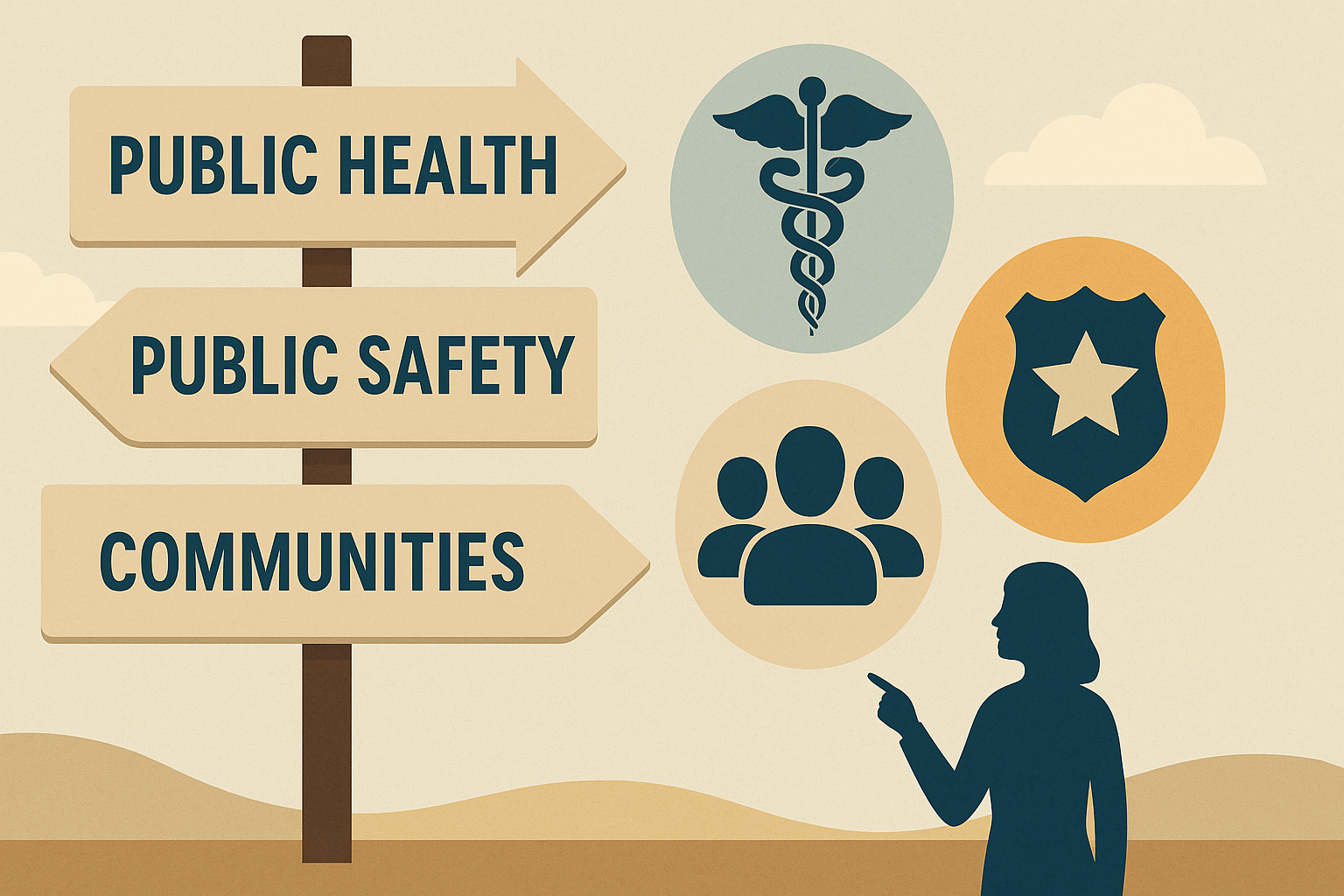Deflection Directions: Philosophies and Concepts Blending Public Health, Public Safety and Communities
DOI:
https://doi.org/10.5281/zenodo.15236212Keywords:
Deflection, pre-arrest deflection, Public Health, public safety, community-engagement, health promotion, SDG, SDG 1, SDG 3, SDG 5, SDG 10, SDG 16Abstract
Inclusion of classical and contemporary public health principles in public safety philosophies of Deflection are essential in design and implementation of resulting programming. By examining learned lessons from public health theories, and engaging communities, both in recovery and not, Deflection can become a sustainable contribution of both safety and health to communities-at-large. This paper provides directives to philosophical foundations for Deflection that can assist with subsequent developments of programs moving forward that are responsive to the cultural needs of communities in need of mental health, and substance use disorder treatment diversion, as well as the public safety professionals that dispense such services. In addition, the paper explains how public safety systems-based engagement with communities, both those who are currently in recovery from these conditions, and those health is harmed vicariously by lacks of safety, can lead to customized, community levels of compassion and reductions of stigma for communities living with these conditions. In short, effective Deflection philosophies and customized frameworks can foster not only community-level safety but also health promotion and preventive capital.
References
CDC Foundation (accessed 2024, December 11). CDC Foundation. https://www.cdcfoundation.org/what-public-health.
Triplett, T, 2021, Public Safety: An Essential Contributor to Public Health and Health Equity, Health Equity: African Americans and Public Health, https://doi.org/10.2105/9780875533292ch14
World Health Organization (accessed 2024, December 11). World Health Organization Constitution. https://www.who.int/about/governance/constitution.
Figure 1 - Epidemiologic Triad - Tretter F. Opinion “Understanding Epidemics - Steps Towards a Theoretical Epidemiology”. Epidemiological Public Health. 2024; Volume 2(Number 2): p. 1038.
Figure 2 - Bronfenbrenner’s Ecological Model - Bronfenbrenner, U. (1977). “Toward an experimental ecology of human development”. American Psychologist, Volume 32(Number 7), pp. 513–531. https://doi.org/10.1037/0003-066X.32.7.513.

Published
How to Cite
Issue
Section
Categories
URN
License
Copyright (c) 2025 Tralonda Triplett

This work is licensed under a Creative Commons Attribution-NonCommercial 4.0 International License.
All authors who publish their work in this journal give their patrimonial rights in favor of the JMSHRS on a non-exclusive basis. This means that authors may enter into other independent and contractual agreements to disseminate their text published in this journal. Such as, for example, including it in an institutional, thematic or other repository, publishing it in a book, or other digital or physical media, as long as they explicitly indicate that the work was first published in this journal.
The responsibility for the content of each published work corresponds exclusively to the authors themselves, excluding the editors from any legal responsibility.
The contents of the journal will be disseminated under a Creative Commons Attribution-NonCommercial 4.0 International (CC BY-NC 4.0). All issues are open access (OA) from the moment of publication.




